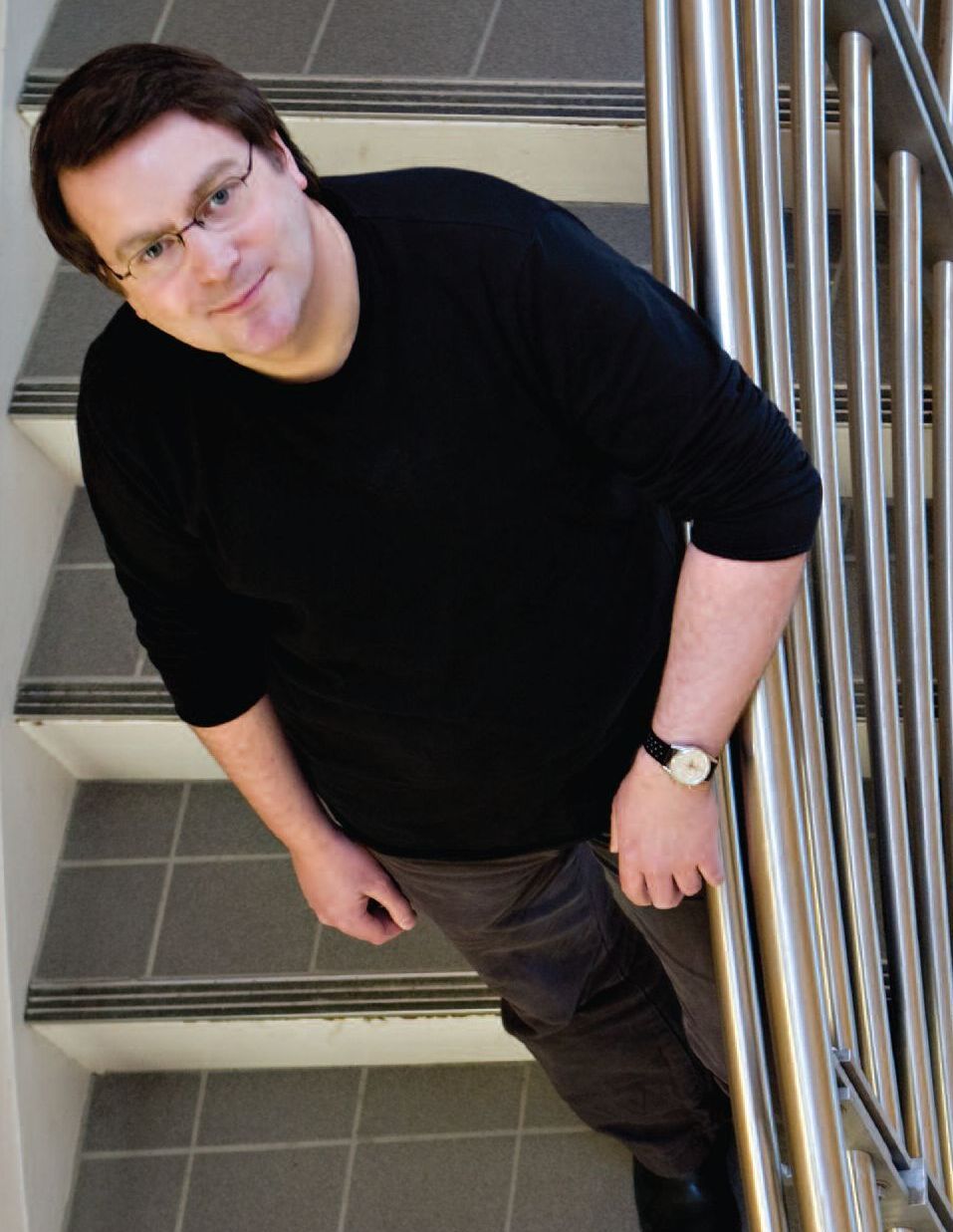 From molecular blueprints to bacterial cities, Holger Sondermann explores biological architecture
From molecular blueprints to bacterial cities, Holger Sondermann explores biological architecture
What do sink scum, dental plaque, and streambed slime have in common? They are all biofilms, billions of bacteria banded together into a resilient community. Beyond clogging your drain, these colonies can turn equipment such as catheters, implants, and heart valves into biomedical hazards. When growing inside the body, biofilms can cause infectious diseases affecting urinary tracts infections, gingivitis, listeriosis in dairy cattle, and the infections associated with the deadly incurable lung disease cystic fibrosis.
But moving from solo life to social life requires communication. Holger Sondermann, structural biologist and student of cellular communication pathways, was determined to find out how Bacteria organize.
“Biofilms cause the majority of all chronic infectious diseases,” said Sondermann. “Once formed, they are extremely difficult to disperse. Knowing how these bacteria aggregate will help us find ways to stop them, but there was a void of information with regard to their signaling mechanisms.”
What happens when a lone bacterium decides it’s had enough of the single’s scene? Like any good Facebook user, it sends out friend requests. Discovering a social networking tool much like those we use online, Sondermann found how bacteria form biofilms by sending invitations to their neighbors. A receptor protein called VpsT accepts the request, and prepares the individual for community life.
“The next step is learning to modulate this pathway,” said Sondermann. “This could inform hospital instrument design, guiding the creation of materials that repel biofilm formation. Understanding how they grow will be crucial in developing future therapies to disperse biofilms and treat chronic infectious diseases. In the case of bovine Listeria infections, understanding these mechanisms could help improve food safety.”
Unveiling such molecular machinery requires probing proteins at the most basic level to uncover their structure. In his second line of research, Sondermann seeks the biophysical blueprints of cell signaling proteins in the brain.
“When they work right, these proteins help telling nerves what to do. When they don’t, they are associated with neurodegenerative diseases such as paraplegias, neuropathies, schizophrenia, and Huntingtons,” said Sondermann. “Our goal is to find how they are normally built in order to see what physically changes when their mutations lead to neurological diseases. Seeing these differences shows us what is physically going wrong, and may lead to better diagnostic tools for neurological disorders.”
A 2008 Pew Scholar in the Biomedical Sciences and Robert N. Noyes Assistant Professor in Life Science and Technology, Sondermann received tenure in November 2010.
“I hope to continue our lab’s work while expanding our collaborations,” said Sondermann. “We have partnered with faculty at the Dartmouth Medical School and University of California, Santa Cruz on the biofilm project, using complementary approaches and exchanging new knowledge. I also hope to intensify my interactions with colleagues in the College of Veterinary Medicine who are interested in infectious diseases, to explore how our research program can fit into the broader mission of the college to improve health across species.”
———-
‘Scopes Magazine, Summer 2011
http://www.vet.cornell.edu/news/documents/scopessummer11_web.pdf